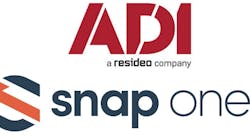From Acronym to Acronym
Q: As the person in the front of the room, I feel responsible for the success or failure of a training session. What should I keep in mind, knowing that I have a room full of adults of all ages?
A: You need to understand the importance of the Adult Learning Model (ALM) and how it applies to the success of training programs. Learning can be difficult for adults. We just don’t soak up information as children do. The research of specialists in diverse fields like psychology and education, along with the experience of companies and consultants in employee training, provide the ALM as a guideline to adult learning.
ALM: RAMP 2 FAME. No you are not reading a foreign language. RAMP 2 FAME—is an acronym that represents key points of the ALM.
- Recency: Information that is learned last is best remembered. It is important for the trainer to summarize frequently and to ensure that the key messages are repeatedly emphasized at the end of each session.
- Appropriateness: All training and information must be appropriate to the participant’s needs.
- Motivation: Participants must want to learn, they must be ready to learn and there must be some reason to learn.
- Primacy: The knowledge participants learn first is usually learned best. First impressions from the trainer are very important.
Confused? Though it may appear the law of Primacy is contradictory to the law of Recency, in fact they co-exist quite well. In any presentation both good opening and closing remarks are critical.
- 2-Way Communication: The training process involves communication with—not at—the students.
- Feedback: Both the facilitator and the participant need information from each other. Reinforcement is also required with feedback.
- Active Learning: Participants learn more when they are actively involved in the process.
- Multiple-Sense Learning: Learning is far more effective if the participants use more than one of their five senses.
- Execution: It’s up to you.
The older people get, the harder time they have remembering isolated data, and they may find it literally impossible to recall information that conflicts with prior understanding. Children are like blank slates—they haven’t developed a fixed hierarchy of facts—they are open to new information and lots of it. As you get older, you have greater biases and beliefs through which information must be channeled to be committed to memory. A fact that doesn’t match an adult’s belief system is difficult to reconcile. Relate new material to old frameworks. It is important to take into consideration an adult’s experience when teaching them.
From kindergarten through college, teaching is traditionally subject-focused. Students move through courses that gradually increase in complexity of subject matter. The value of that approach fades as learners proceed through adulthood. Learning needs to be purposeful in the corporate setting. The most effective corporate training programs anchor abstract learning in real problems that need solving. The popularization of Just-In-Time (JIT) learning is that people use the concepts taught to them immediately before they must apply those skills.
Connie Moorhead is the President of The CMOOR Group and founder of SecurityCEU.com, Louisville, KY. CMOOR is a full-service education solution provider, custom online content development and Webinar service firm focusing exclusively on the security, manufacturing, and construction industries. SecurityCEU is an industry certification resource and online continuing education provider. Send your training questions and needs to [email protected].

